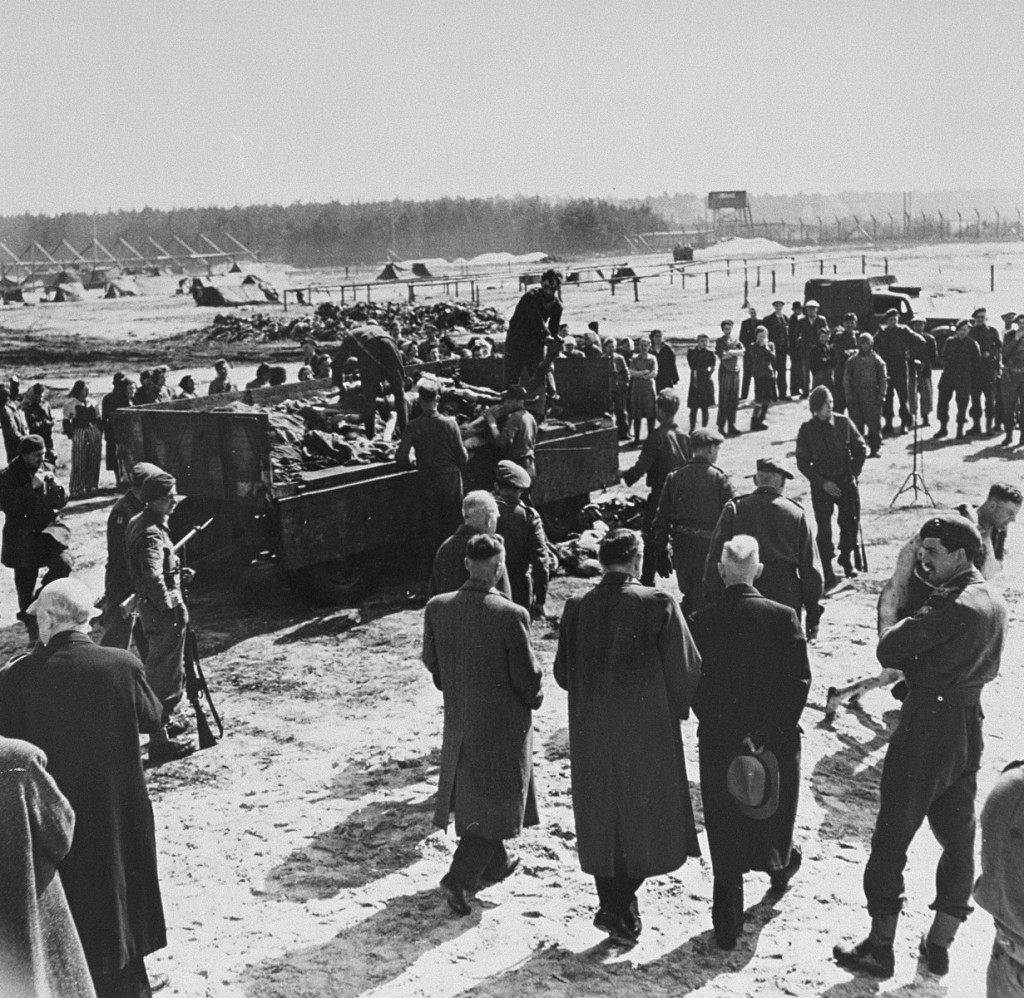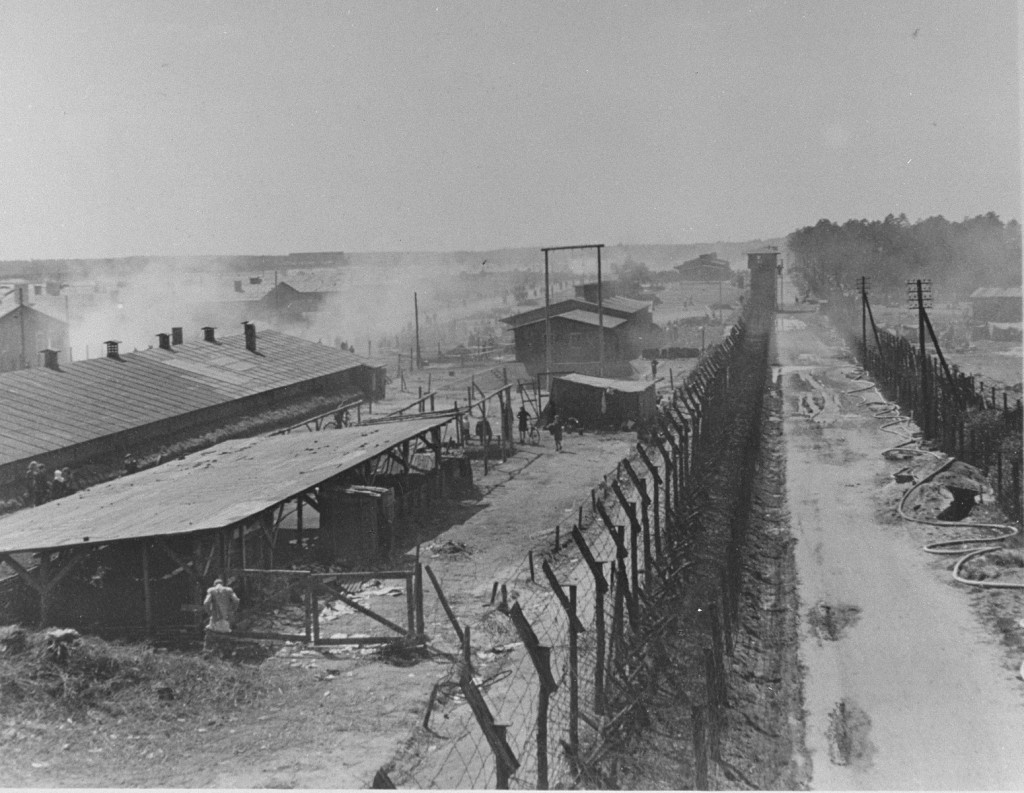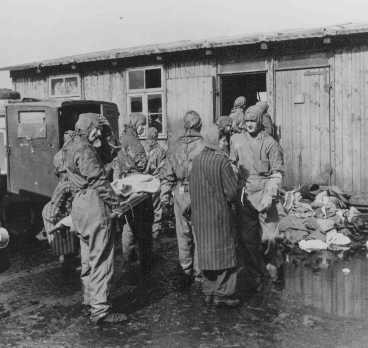
Bergen-Belsen: Key Dates
Explore a timeline of the history of the Bergen-Belsen camp in the Nazi camp system.

Autumn 1940
German military authorities establish the Bergen-Belsen camp as a prisoner-of-war (POW) camp.
April 1943
The SS Economic-Administration Main Office (SS Wirtschafts-Verwaltungshauptamt-WVHA) takes over a portion of Bergen-Belsen and establishes the “residence camp” (Aufenthaltslager) and “prisoners' camp” (Häftlingslager).
SS Captain Adolf Haas becomes the first commandant of the Bergen-Belsen camp.
July 7, 1943
The first transport of Jewish prisoners arrives in the “special camp” (Sonderlager) from Poland.
August 13, 1943
The first transport of Jewish prisoners (all citizens of neutral countries—Spain, Portugal, Argentina, and Turkey) arrives in the “neutrals camp” (Neutralenlager) from Greece.
September 15, 1943
The SS establishes the “star camp” (Sternlager) when the first transport of Jewish prisoners arrives in this camp from the Netherlands.
October 21, 1943
The SS and German police deport around 1,800 prisoners from the “special camp” to Auschwitz.
February 1944
The SS closes the first section of the “prisoners' camp,” which housed non-Jewish prisoners whom the SS authorities had brought to Bergen-Belsen to construct the “residence camp.” The SS transfers the few surviving prisoners of the camp to Sachsenhausen.
February 3–7, 1944
The SS authorities release around 365 Jewish prisoners from the “neutrals camp,” dispatching them to the border of Spain.
March 1944
The “prisoners' camp” begins serving as a collection camp for sick and injured prisoners from other concentration camps. This section becomes known as the “recuperation camp” (Erholungslager).
June 29, 1944
The Germans permits 222 Jewish prisoners from the “star camp” to leave for Palestine in exchange for German citizens held on British territory.

July 9, 1944
The SS establishes the “Hungarian camp” (Ungarnlager) when the first transport of over 1,600 Hungarian Jews arrives in Bergen-Belsen.
August 1944
Within the “prisoners' camp” the SS erects the “tent camp” (Zeltlager), to which they move sick female prisoners, after the “recuperation camp” becomes overcrowded.
August 18, 1944
The SS permits the first transport of Hungarian Jewish prisoners (around 300) from the “Hungarian camp” to leave for Switzerland in return for cash payment.
November 1944
After a storm destroys the “tent camp,” camp officials establish the “small women's camp” (Kleines Frauenlager) within the “prisoners' camp” and transfers the surviving prisoners of the “tent camp” to the “small women's camp.”
December 1944
The WVHA officially designates the Bergen-Belsen camp complex a concentration camp.
December 2, 1944
SS Captain Josef Kramer replaces Adolf Haas as the commandant of Bergen-Belsen.
December 4, 1944
The SS permits the second transport of Hungarian Jewish prisoners (around 1,300) to leave for Switzerland in return for cash payment. An additional 4,200 Hungarian Jews arrive in the “Hungarian camp” from Hungary shortly thereafter.
January 1945
The German authorities dissolve the POW camp in Bergen-Belsen and establish the “large women's camp” (Grosses Frauenlager) for female prisoners evacuated from other concentration camps.
January 21, 1945
A German-American exchange allows 136 Jewish “star camp” prisoners with Central- and South- American papers to leave for Switzerland.
April 6–11, 1945
Shortly before British forces liberate Bergen-Belsen, the SS and police authorities “evacuate” the remaining prisoners from all four subcamps of the “residence camp” (the “special camp,” “neutrals camp,” “Hungarian camp,” and the “star camp”) in the direction of Theresienstadt.

April 15, 1945
British forces liberate Bergen-Belsen.
September–November 1945
A British Military Tribunal tries 48 members of the Bergen-Belsen staff, including 37 SS personnel and 11 prisoner functionaries. The tribunal sentences 11 of the defendants to death, including camp commandant Josef Kramer.
December 12, 1945
British military authorities executes Kramer and his co-defendants.
Critical Thinking Questions
- Who were the prisoners in this camp during the 1930s? How did the prisoner population change during World War II?

